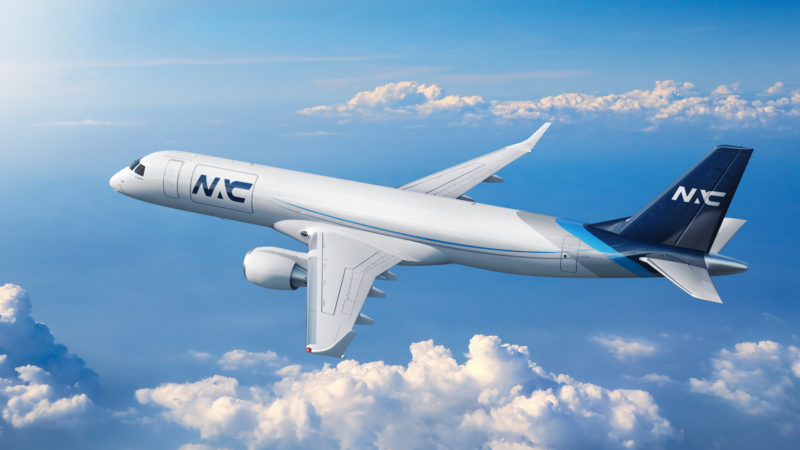Embraer and Nordic Aviation Capital (NAC), have signed a contract for up to 10 conversion slots for the E190F/E195F Passenger to Freighter aircraft.

This follows the agreement in principle that was signed in May 2022, following the launch of the programme in March.
Deliveries of the P2F freighters will commence in 2024. The aircraft for conversion will come from NAC’s existing E190/E195 fleet.
NAC has been busy marketing the aircraft, signing a memorandum of understanding to place their first two E190F passenger-to-freight conversions with Astral Aviation, based in Nairobi, Kenya.
Embraer’s E-Jets P2F conversions will offer over 50% more volume capacity, three times the range of large cargo turboprops, and up to 30% lower operating costs than narrowbodies.
Room for growth
Emberar has delivered over 1,700 E-Jets globally – and plenty of those will be candidates for conversion (or what the industry likes to call “feedstock”). There are benefits with this many aircraft out there – with possible customers being able to benefit from a well-established, mature, global services network, as well as products to support a Day-one operation.
Practical Matters

As has been discussed on this blog, converting an aircraft to a P2F freighter isn’t just a matter of ripping out the interior, and cutting a cargo door in. Embraer has a lot to do at its facilities in Brazil (where the conversion will take place) including:
- The fitting of the main deck front cargo door
- Installation of cargo handling system
- Floor reinforcement
- Installation of Rigid Cargo Barrier (RCB) – 9G Barrier with access door
- Installation of cargo smoke detection system on the main deck cargo compartment
- Air Management System changes (cooling, air circulation, etc.)
- Interior removal and provisions for hazardous material transportation
With these works, the E190F will be able to handle a payload of 23,600lb (10,700kg) whilst the E195F will be able to hold 27,100lb (12,300 kg), with a structural payload of 13,150kg for the E190F and 14,300kg for the E195F on both the upper and lower deck.
The continued growth of the P2F market
We’ve seen major moves in the P2F market, with carriers and nearly all manufacturers either partnering with companies to launch P2F programmes or launching their own in response to market demands, with Boeing, Airbus, De Havilland, ATR and Embraer all bringing their offerings to the market.
These will all attack different segments, with Embraer going after the “Smaller than an A320/737 market, but larger than an ATR” segment.
P2F is one of the oldest methods of “upcycling” in the aviation industry, where a mid-life aircraft is given a new life at a much lower cost than a brand-new aircraft. While they may not benefit from the latest engine technologies, the costs of operation will be in many respects know.
And known costs are something that airlines can plan against and offer appropriate pricing to customers.
Welcome to Economy Class and Beyond. Your no-nonsense guide to network news, honest reviews, featuring in-depth coverage, unique research, as well as the humour and madness I only know how to deliver.
Follow me on Twitter at @EconomyBeyond for the latest updates! You can follow me on Instagram too!
Also, remember that we are part of the BoardingArea community, bringing you the latest frequent flyer news from around the world.